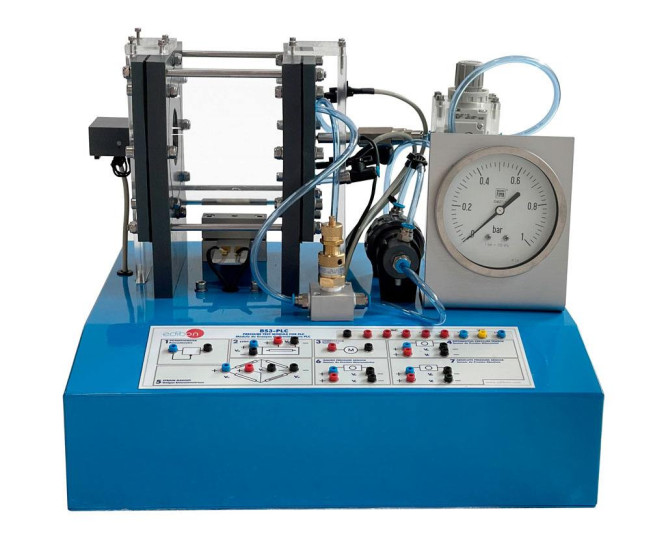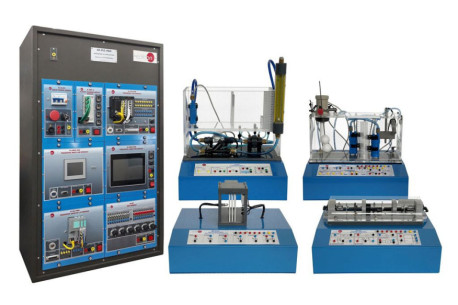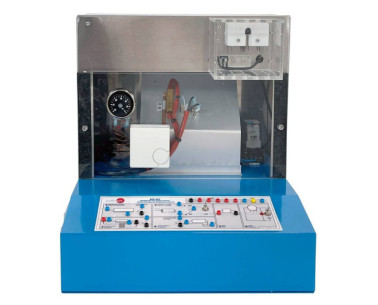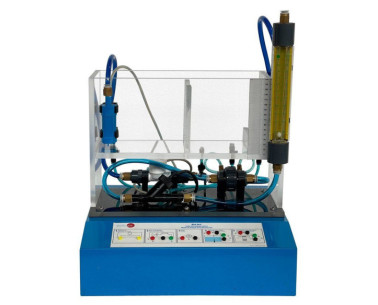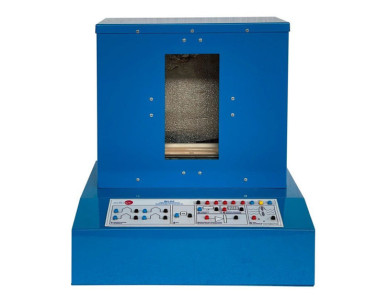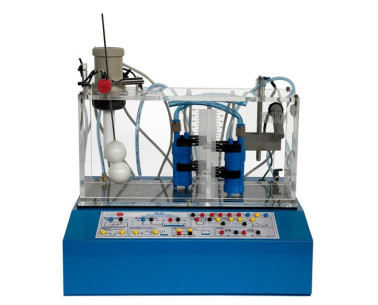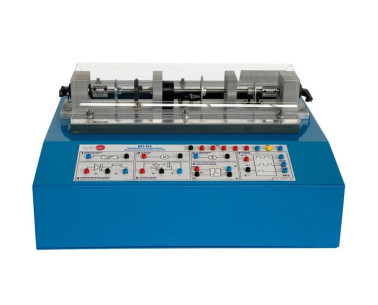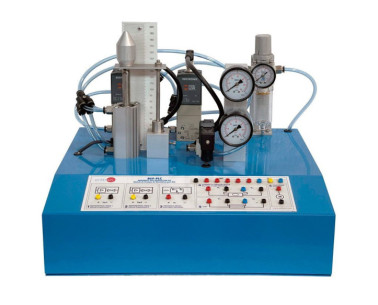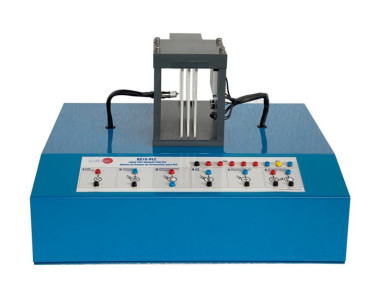At EDIBON, we are committed to strengthening skills as a strategic pillar for the competitiveness and social well-being of the European Union. Proper training not only boosts the economy but also enables individuals to fully participate in society and democracy.
BS3-PLC Módulo de Ensaios de Pressão para CLP
SISTEMAS INOVADORES
The "BS3-PLC" has been designed to study the pressure measurement techniques and control application with a PLC.
NOTÍCIAS RELACIONADAS
Descrição Geral
The "BS3-PLC" has been designed to study the pressure measurement techniques and control application with a PLC. This unit is equipped with a pressure chamber with several sensors, with different uses and applications, adjusted to measure the pressure changes inside the chamber and control the pressure with a PLC. One of the pressure sensor output signals is conditioned to be connected to the PLC. The unit works with a compressor and a manometer connected next to a regulating valve that can adjust the maximum pressure inside the chamber. On both sides of the pressure chamber there are two diaphragms where displacement sensors are connected to measure the pressure valve. The pressure inside the chamber can be controlled by a PLC, controlling the air supply depending on the pressure values obtained from a sensor.
* Available PLC models of different manufacturers: PANASONIC, SIEMENS, OMRON, MITSUBISHI, ALLEN BRADLEY, etc.
EXERCÍCIOS E PRÁTICAS GUIADAS
EXERCÍCIOS PRÁTICOS GUIADOS INCLUÍDOS NO MANUAL
- Use of linear positioning sensor (potentiometer) to detect the displacement produced by a diaphragm expansion caused by the air pressure.
- Use of a LVDT as an element to measure the diaphragm distortion that is consequence of the pressure inside the pressure chamber.
- Differential pressure sensor with hole-board system. Use of a differential pressure sensor of the semiconductor type to measure the pressure fall in a hole-board system.
- Strain gauges. To detect objects using an infrared sensor by light beam interruption.
- Measure the pressure in the chamber, using two different types of sensors (manometric and absolute pressure sensor).
- Strain gauges for measuring deformations: their heating element changes as the diaphragm expands due to the pressure coming from the pressure chamber.
- Using the analog inputs and outputs of the PLC to read and write analog signals.
- Read the pressure sensor signal with the PLC.
- Manual control of the actuator through the PLC.
- PID control of the pressure value through the PLC.
- Observe the effects of the pressure control to changes in the PID parameters.
EQUIPAMENTOS COMPLEMENTARES
6.2.3.- INSTRUMENTAÇÃO E CONTROLE COM PLC
BS-PLC
The Modular System for the Study of Sensors with PLC Control, "PLC-BS", are a large number of modules that show the operation of different sensors to understand the sensor control applications of different technologies, applied to common...
6.2.3.- INSTRUMENTAÇÃO E CONTROLE COM PLC
BS2-PLC
Módulo de Ensaios de Temperatura para CLP
The "BS2-PLC" has been designed to study the use and applications of temperature sensors as a measure device and how to perform a temperature control through a PLC. TThe unit has a half-open space inside which there is a lamp that heats the...
6.2.3.- INSTRUMENTAÇÃO E CONTROLE COM PLC
BS4-PLC
Módulo de Ensaios de Vazão para CLP
The "BS4-PLC" has been designed to study the flow measurement techniques and control with PLC. This unit is unit with two tanks assembled on a structure with a pumping system that allows pumping the water from the reservoir tank, through the...
6.2.3.- INSTRUMENTAÇÃO E CONTROLE COM PLC
BS5-PLC
Módulo de Ensaios de Fornos para CLP
The "BS5-PLC" has been designed to study the temperature measurement techniques inside a sealed place, such as an oven and how to perform a temperature control through a PLC. This unit is equipped with an oven that contains a heating element and a...
6.2.3.- INSTRUMENTAÇÃO E CONTROLE COM PLC
BS6-PLC
Módulo de Ensaios de Nível de Líquidos para CLP
The "BS6-PLC" has been designed to study the liquid level measurement and control techniques of a tank through a PLC. This unit is unit with two tanks with sensor of different technology for level measurement. One of the level sensor output...
6.2.3.- INSTRUMENTAÇÃO E CONTROLE COM PLC
BS7-PLC
Módulo de Ensaios de Tacômetro para CLP
The "BS7-PLC" has been designed to study the linear and angular speed measurement techniques through a PLC. This unit is unit with a miniature motor to move an axle at different speeds, being able to adjust de motor speed by changing the voltage...
6.2.3.- INSTRUMENTAÇÃO E CONTROLE COM PLC
BS9-PLC
Módulo de Ensaios de Pneumática para CLP
The "BS9-PLC" has been designed to study the control and handling techniques of a pneumatic actuator through a PLC. The actuator is a double acting pneumatic cylinder that allows moving a platform. The displacement of the piston axle is detected...
6.2.3.- INSTRUMENTAÇÃO E CONTROLE COM PLC
BS10-PLC
Módulo de Ensaios de Iluminação para CLP
The "BS10-PLC" has been designed to study different light measurement techniques and control light intensity through a PLC. This unit is composed of a lamp whose intensity can be controlled according to the voltage applied and a series of...
Qualidade

Serviço pós-venda

 Preferências de cookies
Preferências de cookies

